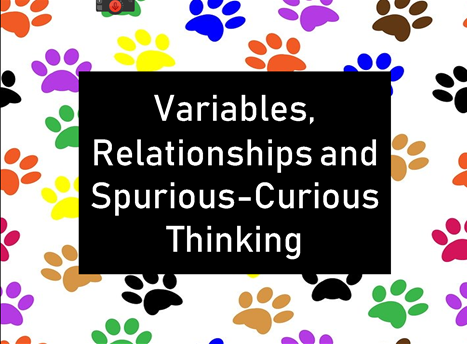Abstract
Could dog ownership cause more climate change than cat ownership? It appears so when examining the relationship between pet choice and whether owners drive personal vehicles to work or use public transportation. However, when controlling for residence type (single family home or apartment) the relationship vanishes. Using simple props, Part 1 of this fun,...Download this resource to see full details. Download this resource to see full details.
Details
- Subject Area(s):
- Research Methods
- Resource Type(s):
- Class Activity
- Class Level(s):
- College 200
- Class Size(s):
- Medium
Usage Notes
Familiarity with variables and relationships between them, an understanding of the nature of causation, and the capacity to view causation claims critically are fundamental to a basic grasp of research methods. Engaging students with this unusual and interesting lecture/activity grounds these concepts using simple and inexpensive props. Students place...Download this resource to see full details. Download this resource to see full details.
Learning Goals and Assessments
Learning Goal(s):
- 1) Define variables and attributes (values); 2) summarize what it means for two variables to be related; and 3) interpret a crosstabulation table
- 4) list & explain the criteria for establishing causation: 5) describe lurking variables & spurious relationships,6) identify a possible lurking variable(s) that could be producing a spurious relationship between 2 variables (see Activity file for more)
Goal Assessment(s):
- 1) Using a one-minute paper classroom assessment technique, multiple-choice, matching, fill-in-the-blank, or short answer test question, ask students to identify or provide definitions of variable and attributes (values). (see Activity notes)
- 2) Using a one-minute paper classroom assessment technique or an essay test question, ask students to list and explain the criteria for establishing causation. (see Activity notes for more)
When using resources from TRAILS, please include a clear and legible citation.


